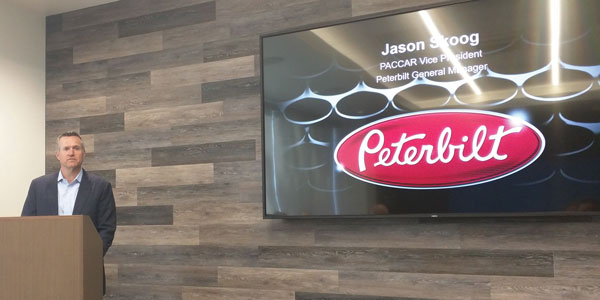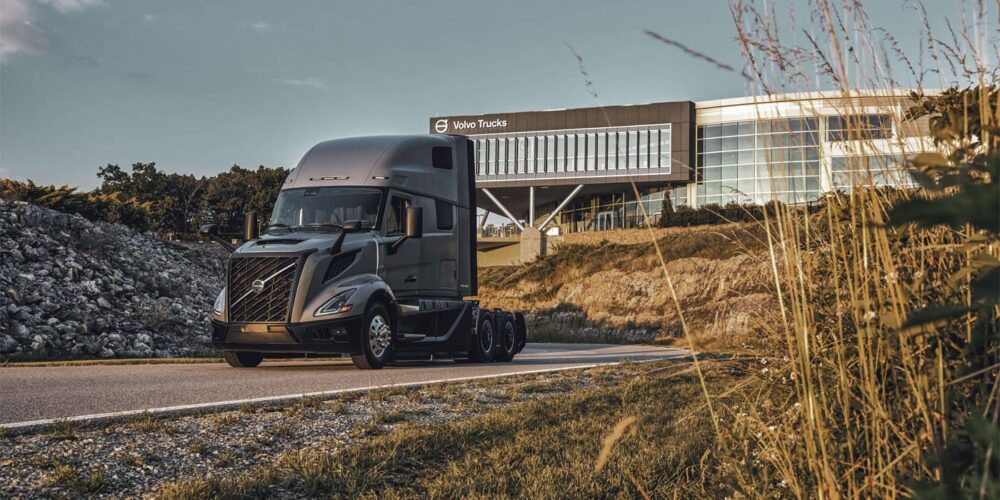Talking about the upcoming truck technology—be it advanced driver assistance systems, platooning, electrification or beyond—is fun, but it’s easy to jump to conclusions about what it means for your fleet and the industry. The gap between technology possibilities and application in reality is often wider than we anticipate. That’s not to say talk of new technology should be brushed off. It’s simply important to view those conversations through the lens of your fleet needs and applications.
“You rarely go into a customer meeting in which new technologies are not discussed; every customer wants to talk about what electrification could mean for them, for example,” said Jason Skoog, PACCAR vice president and Peterbilt Motors Co. general manager, who was promoted to the position in April after Kyle Quinn moved on to become PACCAR’s chief technology officer. “Our response is that we have the refuse-focused Model 520s and drayage-focused Model 579s, and we’re testing those in real world applications. As soon as we gather information on their performance, we’re going to share that with our customers.”
Skoog held court at the PACCAR Innovation Center in the heart of Silicon Valley. The aforementioned all-electric Peterbilt Model 579, which has a range of up to 250 miles, sporting 490 HP with a battery capacity of 350 to 440 Kw/h and a charging time of less than five hours, was on hand to run a demo route that took journalists past headquarters of technology leaders like Google and Nvidia. Skoog also announced that in addition to the all-electric Model 579 and the refuse-focused Model 520, Peterbilt is developing an all-electric Model 220 medium-duty truck it aims to have in service by the end of the year.
“When you look at the truck applications that electrification works for, it’s those three: drayage, refuse and inner-city delivery,” he said. “Those are the three that we’re going to try to create a business case for so that we can give our customers an intelligent, ROI-based answer. After proving out the ROI in those applications, we can take the next step.”
Skoog stressed that all of Peterbilt’s new product initiatives and innovations must have real-world application capabilities and provide timely ROI. The view you take of how you might integrate new truck technology platforms into your fleet should be similar.
“We view innovation across all parts of our business, including our service experience,” Skoog said just before announcing Peterbilt’s development of an augmented virtual reality (AR) service tool. “AR Tech leverages mobile devices. Augmented virtual reality technology allows a user to scan a vehicle VIN to gain access to an x-ray view of the truck’s wiring harnesses. So they know exactly what part of the truck to go to when they need to perform wiring harness service on a vehicle.”
The tech tool is currently in pilot testing at select Peterbilt dealer service locations. Skoog said that the initial feedback has been “overwhelmingly positive” and that he anticipates the tool being rolled out to Peterbilt’s entire dealer service network in the middle to later half of 2019.
“The repairs that the AR Tech could help with could provided a 15% to 20% efficiency gain,” Skoog said, recounting dealer service feedback. “Because of that, we are moving forward with the project. It comes back to our philosophy of ‘purposeful innovation’: We have to try it out, make sure it works and once it does we move forward.”
Peterbilt’s “purposeful innovation” strategy is a good blueprint for your own approach to new equipment technology: Ask questions, test it out and make sure you can make more money with it than without it. Keep to that, and you should be able to navigate whatever new technology comes our way.
Electric truck spec’ing options
While there are promises of reduced maintenance potential with electric trucks, given that there is no diesel engine, the pitfalls of operating an electric truck are still unknown. The same goes for equipment options that would allow you to tailor the truck to your applications. The all-electric Peterbilt Model 579, for example, sports two JJE electric motors centrally located in the truck where you would find today’s diesel engines. They are matched to a 10-speed Eaton AutoShift transmission, in which only five gears are used by the system employed by TransPower, an electric drivetrain integrator.
Scott Newhouse, Peterbilt Motors Co.’s chief engineer, noted that the location of the electric motors—be it centrally located or located on the axle or even the wheel ends—is one of the questions that the OEM seeks to answer.
“We’re evaluating the right motor position based on application,” Newhouse said. “You have to take that motor mass into consideration—where it’s located on the chassis, the location impact on durability. It’s all part of building a long-lasting design. The major purpose of these trucks is the ability to validate the financial benefit and feasibility in applications. The details of these systems continue to evolve.”
For walk-around and test-drive videos of the all-electric Peterbilt Model 579, click here.














